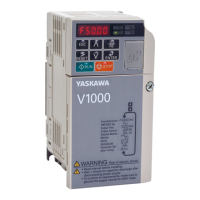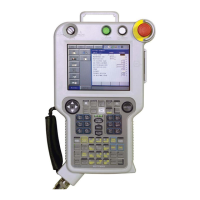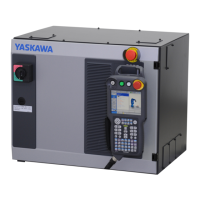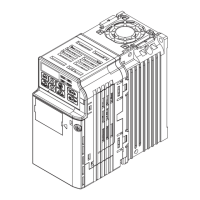Table 4.21 Auto-Tuning Input Data
Motor Type Auto-Tuning Type Digital Input Digital Output
IM Motor
Rotational Auto-Tuning
Digital input functions
are disabled.
Functions the same as during normal operation.
Stationary Auto-Tuning 2
Stationary Auto-Tuning for Line-to-Line Resistance
Rotational Auto-Tuning for V/f Control Functions the same as during normal operation.
Stationary Auto-Tuning 3 Maintains the status at the start of Auto-Tuning.
PM Motor
PM Motor Parameter Settings Digital output functions are disabled.
PM Stationary Auto-Tuning
Maintains the status at the start of Auto-Tuning.PM Stationary Auto-Tuning for Stator Resistance
Z Pulse Offset Tuning
Back EMF Constant Tuning Functions the same as during normal operation.
High Frequency Injection Parameter Tuning Digital output functions are disabled.
PM Rotational Auto-Tuning Functions the same as during normal operation.
IM and PM
Motors
Inertia Tuning
Functions the same as during normal operation.
ASR Gain Auto-Tuning
WARNING! Sudden Movement Hazard. Ensure that the motor and the load are not connected when performing Auto-Tuning. Failure to
comply may cause damage to equipment or injury to personnel.
WARNING! Electrical Shock Hazard. When executing Auto-Tuning, voltage is applied to the motor before the motor rotates. Do not touch
the motor until Auto-Tuning is completed. Failure to comply may result in injury or death from electrical shock. If Rotational Auto-Tuning is
performed, the motor will remain stopped for approximately one minute with power applied and then the motor will rotate for one minute.
n
Notes on Rotational Auto-Tuning
• Decouple the load from the motor to achieve optimal performance from Rotational Auto-Tuning. Rotational Auto-Tuning
is best suited for applications requiring high performance over a wide speed range.
• If it is not possible to decouple the motor and load, reduce the load so it is less than 30% of the rated load. Performing
Rotational Auto-Tuning with a higher load will set motor parameters incorrectly, and can cause irregular motor rotation.
• Ensure the motor-mounted brake is fully released, if installed.
• Connected machinery should be allowed to rotate the motor.
n
Notes on Stationary Auto-Tuning
Stationary Auto-Tuning modes analyze motor characteristics by injecting current into the motor for approximately one minute.
WARNING! Electrical Shock Hazard. When executing stationary Auto-Tuning, voltage is applied to the motor before the motor rotates. Do
not touch the motor until Auto-Tuning is completed. Failure to comply may result in injury or death from electrical shock.
WARNING! Sudden Movement Hazard. If installed, do not release the mechanical brake during Stationary Auto-Tuning. Inadvertent brake
release may cause damage to equipment or injury to personnel. Ensure that the mechanical brake release circuit is not controlled by the
drive multi-function digital outputs.
Stationary Auto-Tuning 2
• Perform when using a vector control mode and Rotational Auto-Tuning cannot be performed.
• Check the area around the motor to ensure that nothing will accidentally cause the motor to rotate during the Auto-Tuning
process.
• Use Stationary Auto-Tuning 3 when the motor test report is not available. Use Stationary Auto-Tuning 2 when the motor
test report is available.
Stationary Auto-Tuning 3
WARNING! Electrical Shock Hazard. When executing Stationary Auto-Tuning 3, voltage is applied to the motor before the motor rotates.
Do not touch the motor until Auto-Tuning is completed. Failure to comply may result in injury from electrical shock.
WARNING! Sudden Movement Hazard. If installed, do not release the mechanical brake during Stationary Auto-Tuning 3. Inadvertent brake
release may cause damage to equipment or injury to personnel. Ensure that the mechanical brake release circuit is not controlled by the
drive multi-function digital outputs.
Stationary Auto-Tuning 3 can be used in either OLV or CLV control by setting T1-01 to 5 and entering the input data from
the motor nameplate. Pressing the RUN key stops the motor for approximately one minute to automatically calculate the
necessary motor parameters. Motor parameters E2-02 and E2-03 are set automatically when using the motor for the first time
in Drive Mode after Auto-Tuning has been performed.
After performing Stationary Auto-Tuning 3, make sure the following conditions are met and use the following procedures to
perform the operation in test mode:
4.7 Auto-Tuning
YASKAWA ELECTRIC SIEP C710636 04D U1000 Industrial MATRIX Drive Technical Manual
161
4
Start-Up Programming
& Operation

